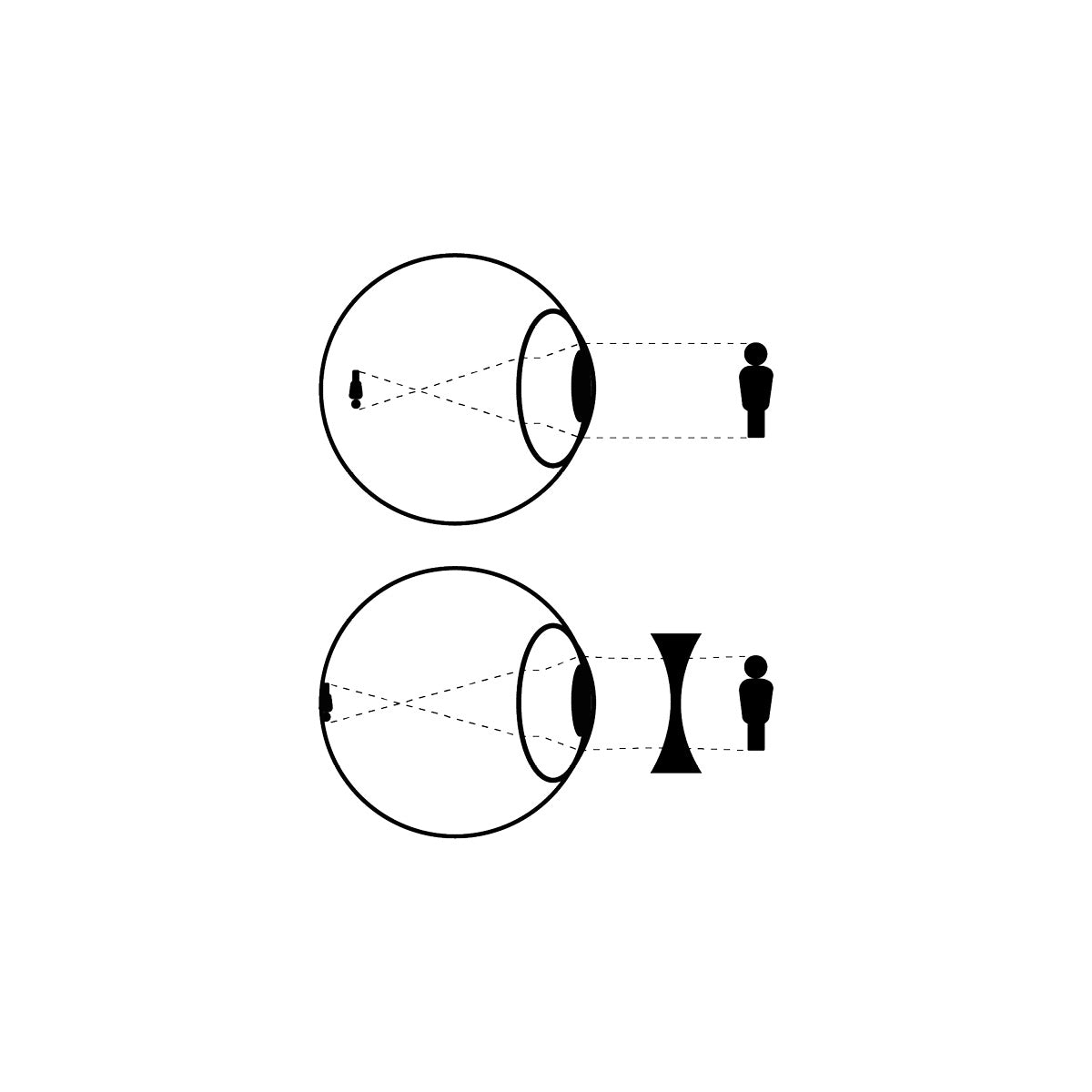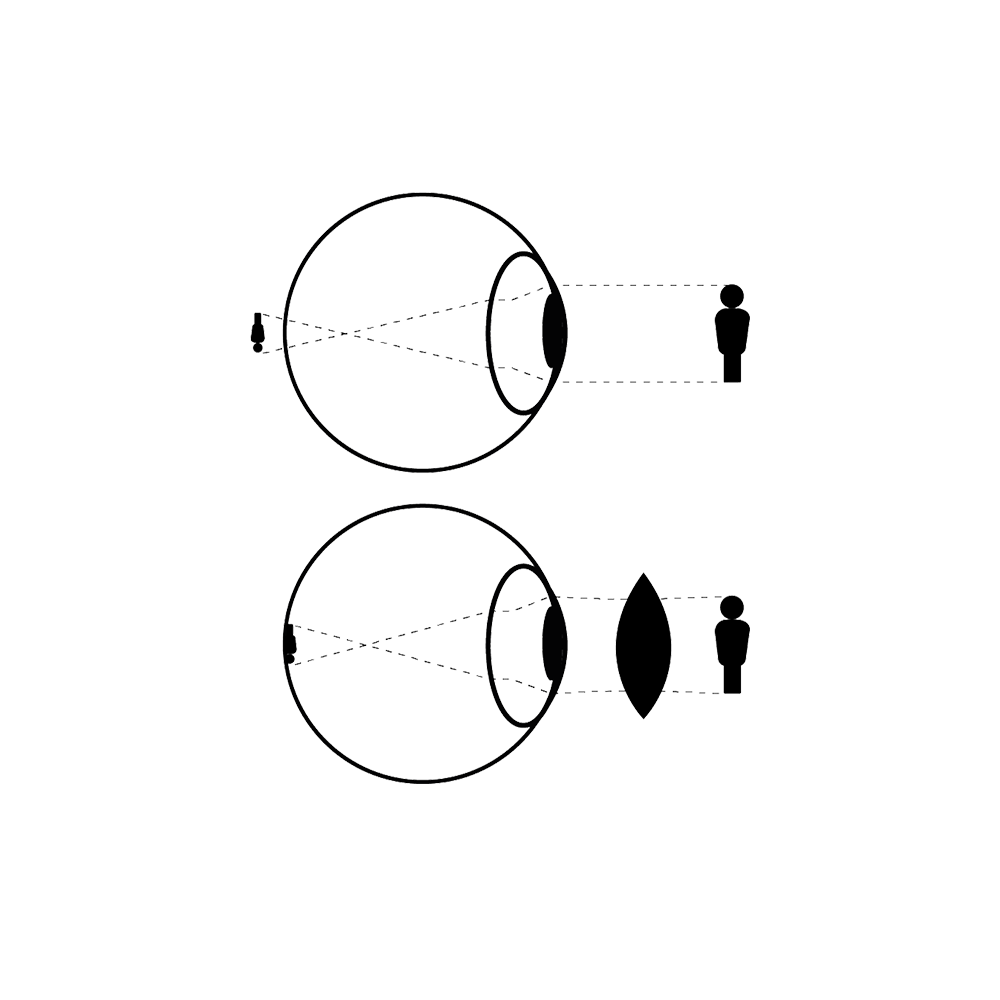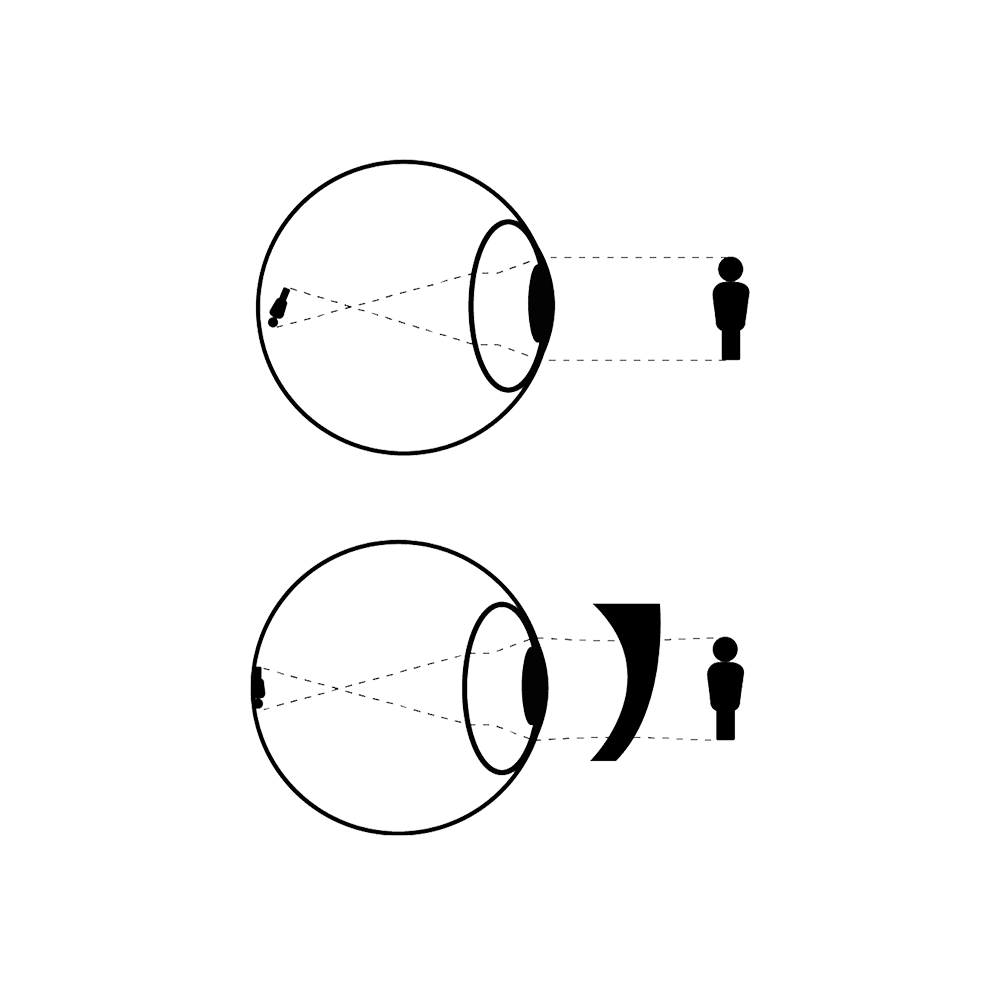
myopia
Myopia, also known as nearsightedness, is a vision disorder in which light does not focus on the retina but in front of it. It is estimated that one-third of the population is nearsighted today, but this eye condition is easily corrected with concave glasses.Nearsightedness makes distant objects appear blurry while close objects appear normal. These symptoms may indicate that you have myopia: You have headaches; You feel tired, your eyes are tired; Your vision is blurred; You must move closer to distant objects, such as the TV. An increased risk of cataract, glaucoma or retinal detachment is often observed in cases of severe myopia.

hypermetropia
Hypermetropia, also known as farsightedness, is a vision disorder in which light focuses behind the retina instead of on it. This condition is often hereditary and frequently present at birth, though many children outgrow it. Hyperopia makes near objects appear blurry while distant objects remain clear. Common symptoms include eye strain, headaches, blurred near vision, and discomfort during prolonged reading. While mild cases can be compensated by the eye’s focusing effort, this becomes more difficult with age, often requiring corrective lenses.

Astigmatism
Astigmatism is a vision disorder where the cornea or lens has an irregular shape, causing light to focus unevenly on the retina. The result is blurred vision at all distances, often accompanied by headaches, eye strain, or visual discomfort. Astigmatism may occur alone or together with myopia or hyperopia. Because it is sometimes missed in routine screenings, many cases remain undetected until symptoms become noticeable. Correction is achieved with cylindrical lenses, which compensate for the uneven curvature of the eye and restore clear, balanced vision.
OVER 45 years
Presbyopia
Presbyopia is a natural part of the eye’s aging process and affects everyone eventually. It is not a disease, but rather the gradual loss of the lens’s flexibility, reducing the ability to focus on near objects. Presbyopia usually becomes noticeable around the age of 45 and should not be confused with hyperopia, even though both affect near vision. Common symptoms include blurred vision at normal reading distance, the need to hold reading material farther away, and headaches or eye strain when performing close work. Correction is simple and effective, most often with reading glasses or multifocal lenses.

